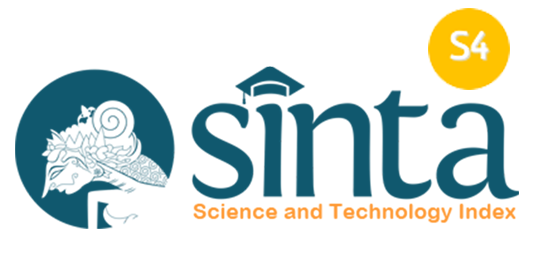Utilization of Used Goods as Innovative, Creative, and Interactive Educational Media
Abstract
Field observations showed that there is still a lack of use of instructional media by teachers. Therefore, it is deemed necessary to develop effective learning media.This community service program focuses on mentoring the target audience to find solutions to particular educational problems, especially in the school environment. Based on the results of the needs analysis at school, the PkM team and teachers then created 5 types of learning media, namely (1) giant snakes and ladders, (2) calculation ruler, (3)vocabulary puzzle, (4) brainy game (jumping with hands and feet), and (5) bottle caps for learning numbers and letters. These media are not only innovative, creative, and interactive, but also utilize used materials and goods available in the environment. The trial implementation of these media showed very positive results for both teachers and learners. One important note is the need to socialize the use of the new media and learning methods to students’ parents and the village community. In addition to providing parents with an understanding of the non-conventional learning models, it is also aimed at inviting the community to support the development of learning media by donating their materials and goods to the school. This community service activity has high significance because it not only targets the educational aspect (improving the quality of teaching) but also the environmental aspect (offering solutions for recycling waste/used goods).
Downloads
Downloads
Published
How to Cite
Issue
Section
License
Copyright (c) 2024 Deddy Amrand, Syahbuddin, Eva Herik, Siam, Yulius Tandi Sapan, Linda Fajriah, Hamdiansyah

This work is licensed under a Creative Commons Attribution-ShareAlike 4.0 International License.
Authors who publish with the Educate: Journal of Community Service in Education agree to the following terms:
- The journal allow the authors to hold the copyright without restrictions and allow the authors to retain publishing rights without restrictions.
- Authors retain copyright and grant the journal right of first publication with the work simultaneously licensed under a Creative Commons Attribution 4.0 International License that allows others to share the work with an acknowledgement of the work's authorship and initial publication in this journal.
- Authors are able to enter into separate, additional contractual arrangements for the non-exclusive distribution of the journal's published version of the work (e.g., post it to an institutional repository or publish it in a book), with an acknowledgement of its initial publication in this journal.
Authors are permitted and encouraged to post their work online (e.g., in institutional repositories or on their website) prior to and during the submission process, as it can lead to productive exchanges, as well as earlier and greater citation of published work (See The Effect of Open Access).
This work is licensed under a Creative Commons Attribution 4.0 International License.







